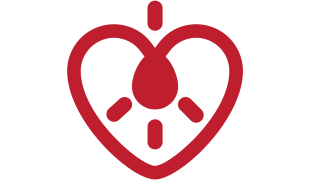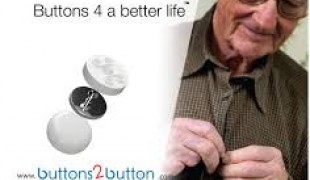- 6505
- 464
- 8
- 8
- 0
- Help Ukraine
About the solution
“As a mother of three young boys, time is not something I have in abundance. My youngest son has a neurological condition that prevents him from being able to move voluntarily; meaning he is 100% dependant on others. Due to this, dressing and undressing him is an extremely difficult task, especially when it comes to putting on t-shirts, jumpers and jackets. Looking for solutions already available, it was clear there wasn’t anything very appealing or trendy for older children or teenagers, nor any products that would satisfy or solve our littlest man’s dressing challenge.
It was then that I decided to start CAPR-Style, to produce a complete line of clothing, a whole wardrobe that solves the daily challenges of dressing disabled children, young and old, bringing them fashion and style, and with the carers needs discretely incorporated into the items”, the mother explained.
CAPR-Style is complete line of clothing that caters exclusively for children with special needs and solves the daily challenges brought by dressing children with disabilities and physical restrictions. Some of the garments in the CAPR-Style range present features such as flaps in the fabric in order to dissimulate the gap for medical necessities such as G-tubes, IV tubes, catheters and colostomy bags. They offer adaptive clothing that is discreet, such as a jumper that opens and closes with Velcro at the back as well as a versatile jacket with openings both at the back and front that also comes with a detachable colar.
Each CAPR-Style garment is handmade and products can be customized and adjusted to fit the individual’s personal needs. The garments are designed specifically to adapt to the toileting and changing needs of people with severe disabilities, such as motor neuron disease, spinal injury, cerebral palsy and also for wheelchair users and those with incontinence problems.
More info: http://capr-style.com/
Adapted from: http://bit.ly/2dOWcNY
What about you, do you have any solutions? Please share them with the Patient Innovation community!
这些解决方案不应包括使用药物,化学品或生物制品(包括食品);创伤性设备;冒犯性的,商业或内在危险的内容。该解决方案未经医学验证。请谨慎进行!如果您有任何疑问,请咨询健康专家。
DISCLAIMER: This story was written by someone who is not the author of the solution, therefore please be advised that, although it was written with the utmost respect for the innovation and the innovator, there can be some incorrect statements. If you find any errors please contact the patient Innovation team via info@patient-innovation.com
-
-
543
-
0
-
7396

Slacks with zippers on both sides for patients who have to stand up in public
CAREGIVING
(SELF)-CARE: DRESSING: Dressing independently.
Amyotrophic Lateral Sclerosis
Strategy/Tip
Body-Worn solutions (Clothing, accessories, shoes, sensors...)
Tremors
Muscle cramps or spasms
Stiffness or rigidity (difficulty moving)
Muscle weakness
Trouble with fine motor skills (e.g., writing, buttoning clothes)
Sleep disturbances
Numbness or tingling in the extremities
Restoring mobility
Managing pain
Promoting self-management
Managing Neurological Disorders
Promoting inclusivity and social integration
Preventing (Vaccination, Protection, Falls, Research/Mapping)
Caregiving Support
General and Family Medicine
Medical Genetics
Medical Oncology
Neurology
Orthopedics
Physical Medicine and Rehabilitation
Rheumatology
United States
-
-
-
220
-
0
-
2158

Adapted and high mirror toys to encourage her daughter to put
CAREGIVING
(SELF)-CARE: GROOMING: Personal grooming, such as combing hair or shaving
STANDING UP: Standing up from a seated position
Cri du Chat Syndrome
Strategy/Tip
Restoring mobility
Promoting self-management
Preserving Organ Function
Managing Neurological Disorders
Promoting inclusivity and social integration
Maintaining Balance and Mobility
Restoring Blood Circulation
Preventing (Vaccination, Protection, Falls, Research/Mapping)
Raise awareness
Caregiving Support
Child and Adolescent Psychiatry
General and Family Medicine
Neurology
Pediatrics
Physical Medicine and Rehabilitation
Portugal
-
-
-
432
-
7
-
7249

Woman creates magnetic buttons to help stepfather who has Parkinson's disease get dressed
(SELF)-CARE: DRESSING: Dressing independently.
Grip
CAREGIVING
Parkinson's Disease
Multiple Sclerosis
Bone Disorders (Decalcification, Bone Deformity, Bone Fracture, Bone Infection)
diabetes type 2
Assistive Daily Life Device (to help ADL)
Body-Worn solutions (Clothing, accessories, shoes, sensors...)
Muscle weakness
Tremors
Difficulty coordinating movements
Stiffness or rigidity (difficulty moving)
Limited range of motion
Muscle pain or stiffness
Loss of balance
Reduced grip force (grip)
Trouble with fine motor skills (e.g., writing, buttoning clothes)
Loss of muscle coordination
Muscle cramps or spasms
Joint deformity
Muscle twitching
Numbness or tingling in the extremities
Joint pain or swelling
Promoting self-management
Managing Neurological Disorders
Promoting inclusivity and social integration
Caregiving Support
Endocrinology
Neurology
Orthopedics
Rheumatology
United States
-
 zh
zh